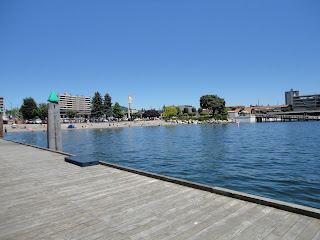The co-operation Between Washington State and Middle East to fight the Same Enemy
First of all, both Americans and Arabs raise an aim “Rust never Sleep”. They try in this time to find the best solutions to fight that disease that attacks wheat. Wheat one of the agriculture pillar where affected by so many diseases. This kind of war needs a real team work which may not cause the fallen of that pillar. These diseases included ordinary diseases (Stripe rust) and the interference of insects (Hessian fly). That was found in both Washington state and Middle East land, so the studies always come to find solutions to the problem to heal the patient, also to see the differences that we may apply it in the Arab land, to increase the production ability.
To know what this kind of disease, stripe rust is one of the most spread diseases all over the world especially with the places of a cool temperature that may infect the wheat and destroy it leafs and the consequences lead to a general weakness and that will effect on the productivity of the wheat. Stripe rust used to spread throughout the air and it can travel throughout miles. Stripe rust seems to be like a bright yellow-orange stripes arranged between leaf veins. That will effect on the yielding process and on the productivity of it. Stripe rust is the major disease that affects the wheat crop across the entire state. WSU works on genetic resistance and fungicide application to fight this type of disease. The most useful form of technology is genetic resistance, but at times fungicides are needed to control this disease. The most preferred way is genetic resistance and you can’t imagine what the situation could be without it. “In some areas of western Washington, yield losses of up to 100% can occur due to stripe rust”, that what is found in WSU researcher on a research built on wheat. Also for the Middle East the effect was in its large scope that what Aleppo meeting in Syria concluded that it is about 40% of wheat’s farms destroyed by the same disease. "These epidemics increase the price of food and pose a real threat to rural livelihoods and regional food security," said Mahmoud Solh, director general of the International Center for Agricultural Research in the Dry Areas (ICARDA). This reduction on the productivity of the corps will effect entirely on the shape of economy especially for the Middle East because its countries which agriculture represents one of the important issues for commercial and it may cause an inner and outer effect on the economy.
So many studies were built to create a new generation of wheat that which contained a highly resistance from that disease. One of these is the (Eltan) a type of wheat which has a highly resistance from stripe rust and from dry which represent about 20% of crops in Washington (Carter, WSU Research center). Murrow College had arranged a meeting with two Jordanian Professors who show to us how the co-operation looks like. They talk how WSU tried to transfer the ideas and new ways of technological treatment. The only way and the easiest one is to send professors to share the Jordanian Professors in Jordan or the farmers about the best ways to deal with this kind of disease. One of these ways is used as a cure is the Crop-Duster which is an agriculture airplanes used to spread the chemical materials on the crops to released or at least cure it from the diseases. The use of low rates of nitrogen fertilizer will not give the disease a long period to stay.” Moderately resistant varieties (such as Stephens winter wheat and Alpowa spring wheat) that provide adequate rust resistance in eastern Washington can have substantial yield losses (5–20%) in western Washington” Carol, WSU, and there are so many other ways about how to deal with it.
Now the connection is increased between Washington and the Middle East through out ways of communication and exchange programs between WSU and Middle east. This mutual exchange of information will definitly take the problem out from its roots. So the Arab in the middle East try to catch up with American solution through out education and practical researchs on the best solution that can fit in their land.
By:
Mohammed S. and Melad M.


















